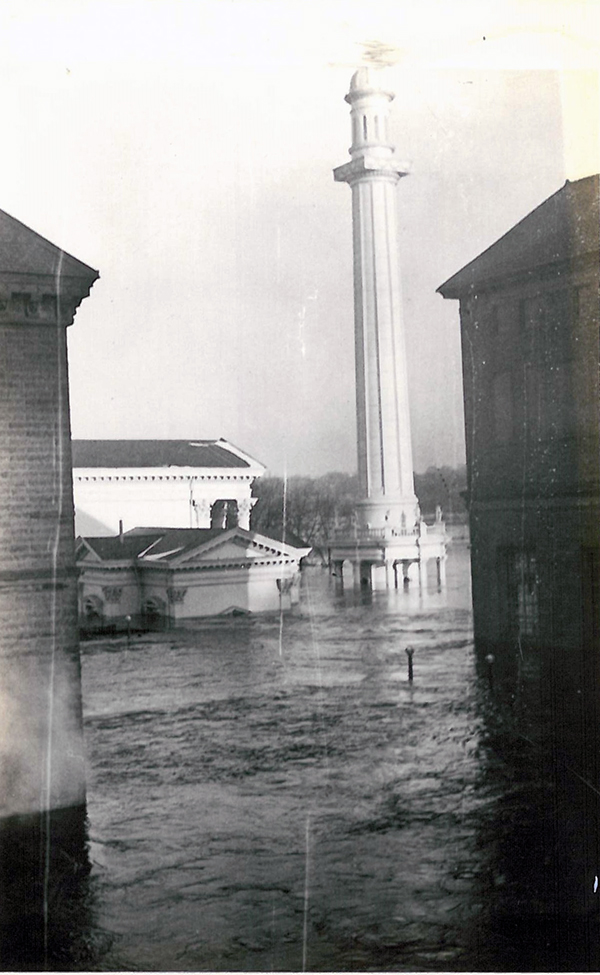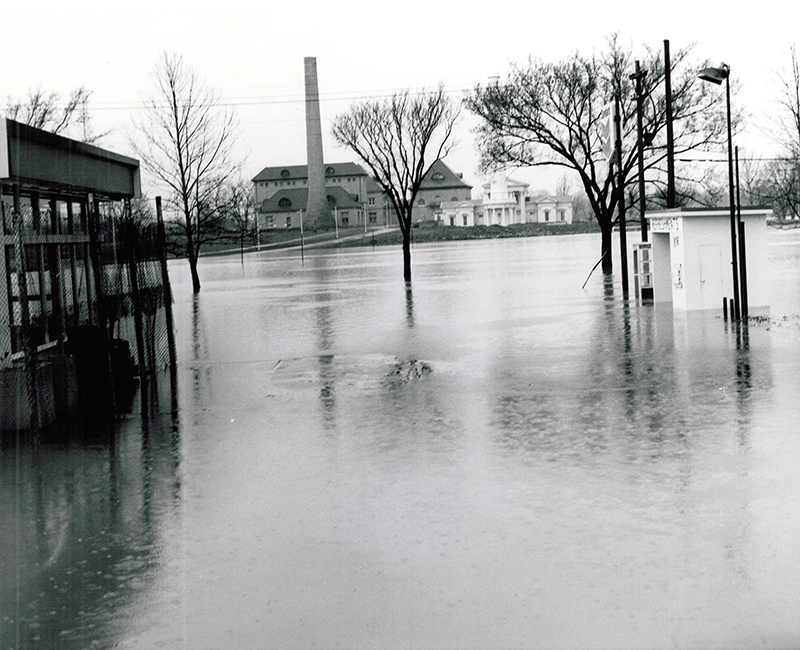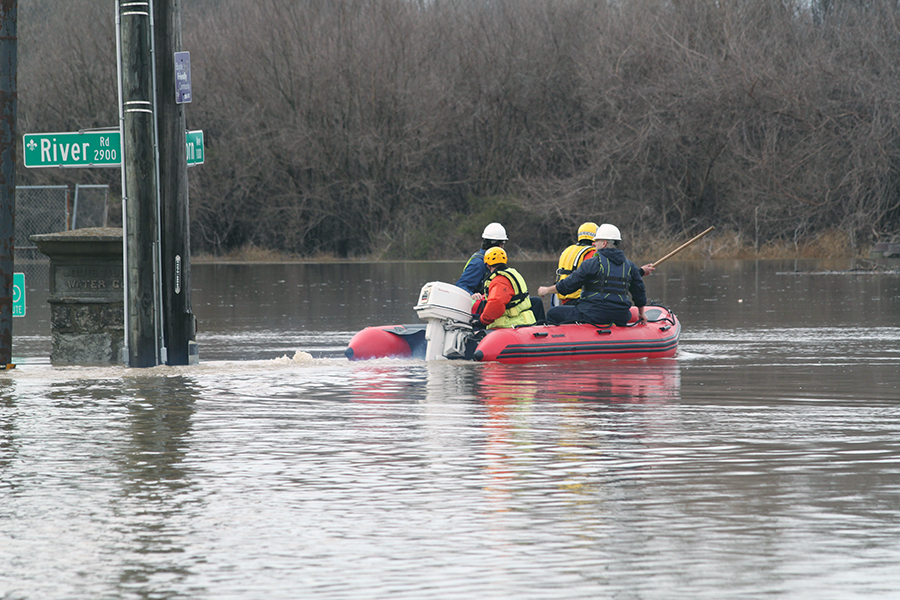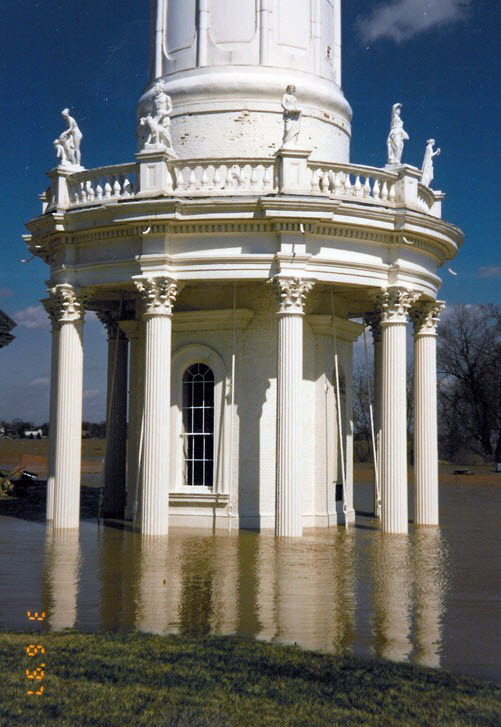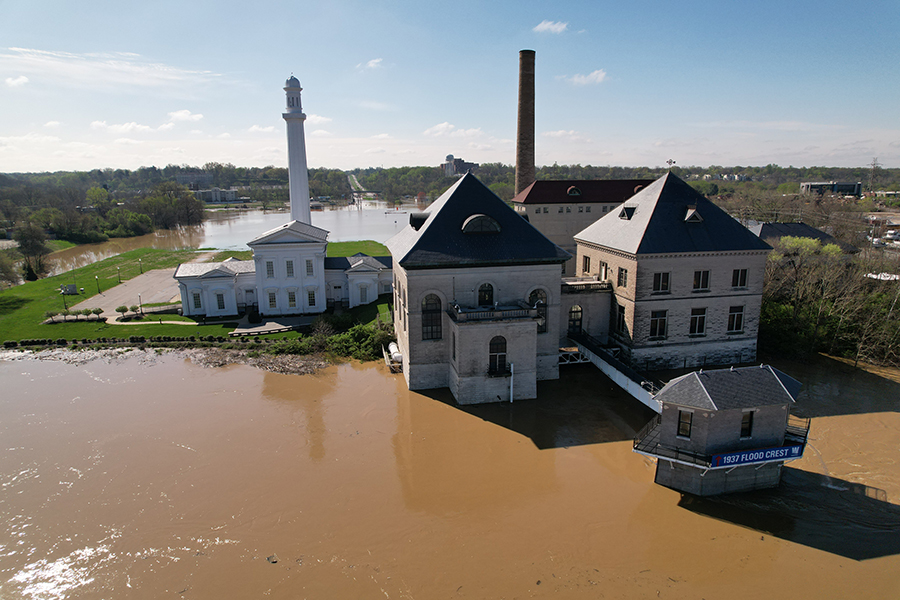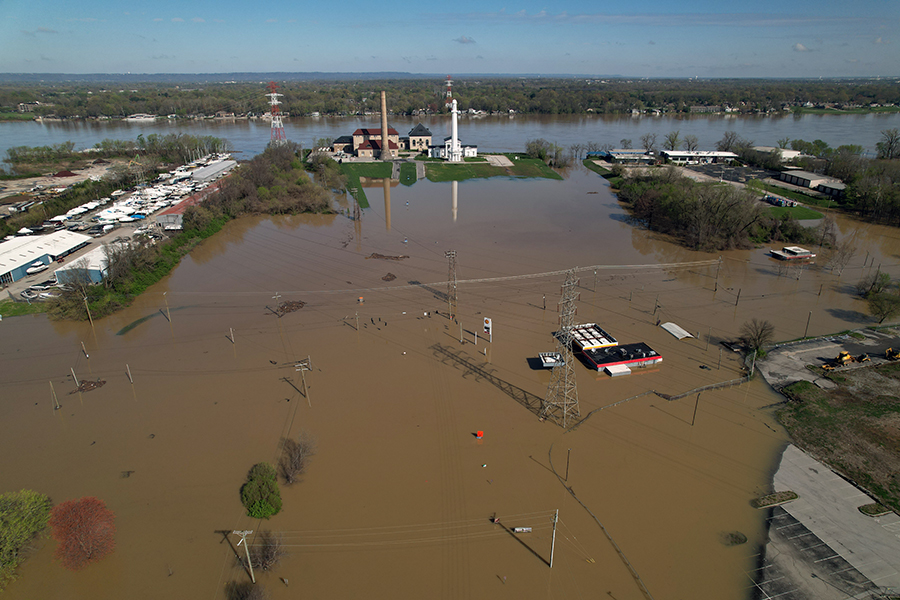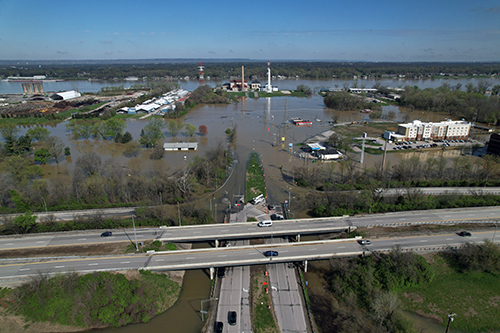 For the second time in less than two months, floodwaters have ravaged Kentucky. Last week’s storms and relentless rain in the days that followed hit much harder than the February storms.
For the second time in less than two months, floodwaters have ravaged Kentucky. Last week’s storms and relentless rain in the days that followed hit much harder than the February storms.
When you see the images, it’s hard to comprehend how the Ohio River quickly spilled out of its banks, covering homes, businesses, and roads. River Road has more of a literal meaning now as we wait for the river to crest around 37 feet on Wednesday, making it the worst flooding we’ve seen here in 28 years.
When you look at the view from above courtesy Louisville Water freelance videographer Mark Crowner, you really see the magnitude of the flooding. This video from Monday shows the river meeting the interstate and creeping to the roofline of many homes and businesses.
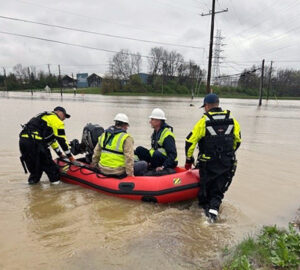 On Monday, with the help of Louisville Fire & Rescue, Louisville Water crews used a boat to access Louisville Water Tower and the pumping stations. Our maintenance and operation personnel are staffing the facility around the clock. While the flood has not impacted our distribution system, our water quality team has adjusted its treatment strategies to ensure we continue to deliver safe, clean drinking water.
On Monday, with the help of Louisville Fire & Rescue, Louisville Water crews used a boat to access Louisville Water Tower and the pumping stations. Our maintenance and operation personnel are staffing the facility around the clock. While the flood has not impacted our distribution system, our water quality team has adjusted its treatment strategies to ensure we continue to deliver safe, clean drinking water.
2018
 When you look back at the top 10 floods to hit our area, you’ll see that many of them fell during the first three months of the year before spring arrived.
When you look back at the top 10 floods to hit our area, you’ll see that many of them fell during the first three months of the year before spring arrived.
The February 2018 flood also prevented employees from driving to Louisville Water Tower. It was a similar scene to recent days; Crews used a boat to paddle their way to the Tower where they worked 24-hour shifts. WaterWorks Museum and Louisville Water Tower closed to the public.
1997
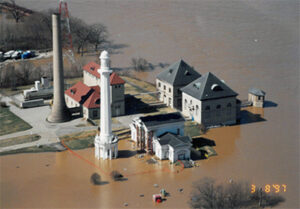 Some compared the river levels of the 2018 flood to the 1997 flood, the seventh highest Ohio River flood on record. It crested on March 17, 1997 at 38.76 feet. During that time, we could only access the pumping station by helicopter or boat. Sandbags stacked up near flood walls and crews worked continuously to maintain equipment and treat the increasingly muddy water pulled from the river.
Some compared the river levels of the 2018 flood to the 1997 flood, the seventh highest Ohio River flood on record. It crested on March 17, 1997 at 38.76 feet. During that time, we could only access the pumping station by helicopter or boat. Sandbags stacked up near flood walls and crews worked continuously to maintain equipment and treat the increasingly muddy water pulled from the river.
1937
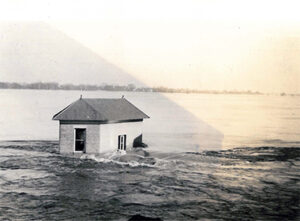 Known as the “Great Flood of 1937”, Louisville endured unprecedented rain with 20 inches falling in less than a month. Water levels reached 57.1 feet, nearly swallowing the screen tower outside Pumping Station No. 2 on River Road. At one point, 54 inches of water filled the pumping station.
Known as the “Great Flood of 1937”, Louisville endured unprecedented rain with 20 inches falling in less than a month. Water levels reached 57.1 feet, nearly swallowing the screen tower outside Pumping Station No. 2 on River Road. At one point, 54 inches of water filled the pumping station.
 Following a request from LG&E to conserve electricity and shut down one of our pumps, Louisville Water fired up boilers to keep things flowing. When that was no longer a feasible solution, Louisville Water’s chief engineer L.S. Vance got creative and brought in some reinforcement. Workers used boilers from the C.C. Slider steamboat to power the Allis Chalmers steam pump. The steadfast commitment to deliver water to our customers who rely on it never wavered.
Following a request from LG&E to conserve electricity and shut down one of our pumps, Louisville Water fired up boilers to keep things flowing. When that was no longer a feasible solution, Louisville Water’s chief engineer L.S. Vance got creative and brought in some reinforcement. Workers used boilers from the C.C. Slider steamboat to power the Allis Chalmers steam pump. The steadfast commitment to deliver water to our customers who rely on it never wavered.
1884
Up until 1937, the flood in February 1884 held the record for the city’s worst flooding event.
Water inundated the pumping station (built in 1860) for several days, submerging flues that connected boilers and stopping Cornish pumps from operating for 121 hours. Fortunately, there was enough water in the Crescent Hill Reservoir to provide drinking water to customers.
The flooding happened amid plans to build a new pumping station. As a result, it was quickly decided to build it on higher ground, five feet higher than the crest of the 1884 flood. It still stands today.

